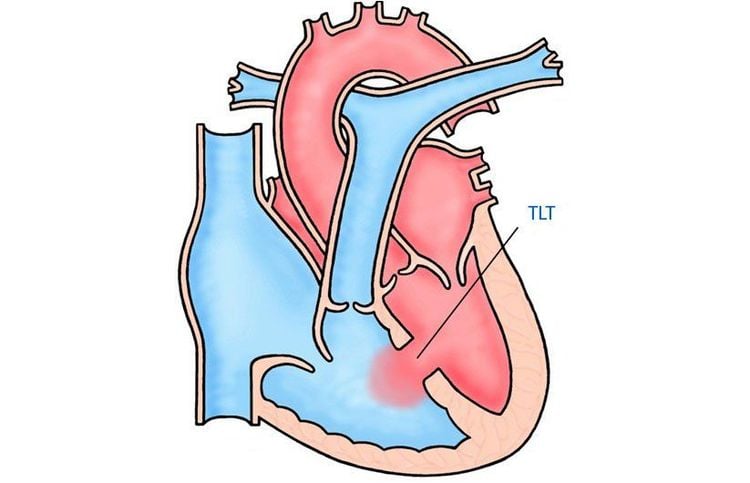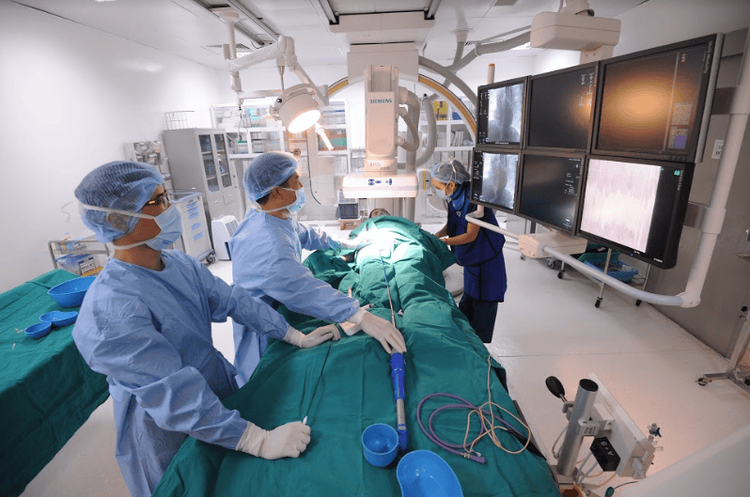This is an automatically translated article.
The article was professionally consulted with Master, Doctor Vu Quoc Anh - Pediatrician - Department of Pediatrics - Neonatology - Vinmec Danang International General Hospital.Congenital heart disease is the most common malformation and the leading cause of death among birth defects in children. Congenital heart disease is divided into cyanotic congenital heart disease and non-cyanotic congenital heart disease.
1. What is congenital heart disease?
Congenital heart disease are defects of the heart or large blood vessels present from birth. Congenital heart disease is generally divided into cyanotic congenital heart disease and non-cyanotic congenital heart disease.So far, the cause of congenital heart disease has not been found. Genetic and environmental factors are thought to play a role in the development of congenital heart defects during the fetal period.
2. Congenital heart disease without cyanosis
Non-cyanotic congenital heart disease is a congenital heart defect that does not cause cyanosis, including: congenital aortic or pulmonary stenosis, ventricular septal defect, atrial septal defect, coarctation of the aorta, and ductal arteriosus. .Aortic stenosis: Aortic stenosis can occur in different locations, but the most common is coarctation of the aorta (the area corresponding to the aortopulmonary ligament, behind the dissection of the inferior artery. left blow). Pulmonary stenosis: Pulmonary stenosis can be caused by damage to the pulmonary valve, damage to the funnel (exit stenosis) due to hypertrophy of the supraventricular muscle, or a combination of both the valve and the funnel while the interventricular septum still normal. Pulmonary stenosis may be isolated, possibly in the setting of tetralogy of Fallot. Ventricular septal defect: is a condition in which there is a passage between the two ventricles through the interventricular septum. This is the second most common congenital heart disease.

3. Symptoms of congenital heart disease without cyanosis
Many cases of non-cyanotic congenital heart disease show no symptoms. If heart failure is present, the baby will have nutritional difficulties due to not having enough strength to suckle, tend to have slow weight gain, and cry less than usual. In severe cases, children often have difficulty breathing and rapid breathing. If not diagnosed in infancy, symptoms may appear as the child grows older. It is physical retardation, shortness of breath at first with exertion and later even at rest.4. Treatment of non-cyanotic congenital heart disease The treatment of non-cyanotic congenital heart disease depends on the type of congenital heart defect. There are cases that require surgery very early in the first months after birth. It can be a total repair or a temporary fix. Children with congenital heart disease should be monitored periodically with a pediatric cardiologist to make treatment decisions at appropriate times.
Congenital heart disease without cyanosis should be treated early so as not to endanger the life of the child. You should choose large and reputable hospitals for surgery because this is not a simple surgery.

A system of modern and advanced medical equipment, possessing many of the best machines in the world, helping to detect many difficult and dangerous diseases in a short time, supporting the diagnosis and treatment of doctors the most effective. The hospital space is designed according to 5-star hotel standards, giving patients comfort, friendliness and peace of mind.
Please dial HOTLINE for more information or register for an appointment HERE. Download MyVinmec app to make appointments faster and to manage your bookings easily.














